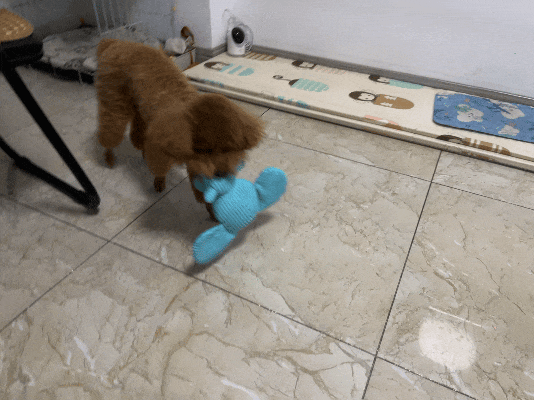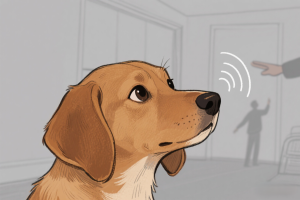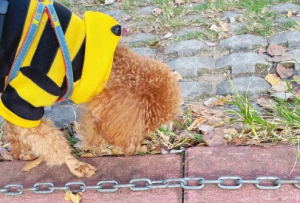I once bought two toys for Sonny—one was a blue elephant, and the other was a pink-and-white cow. I gave both toys to him at the same time, but he instantly developed a strong preference for the blue elephant. Now, the elephant’s trunk is nearly chewed off, while the cow is still in one piece. At first, I thought it was just because the elephant’s trunk was easier to chew, but later I realized that wasn’t the case at all. The issue was actually with the color!
-
The truth is, dogs can see far fewer colors than we can!
Let’s start by debunking the most common myth: dogs are not colorblind, but they do have color weakness, and they are also nearsighted. They can’t see as many colors as we humans can. We have three types of cone cells in our eyes, allowing us to distinguish three primary colors—red, green, and blue—and combine them to create a wide range of hues. But dogs only have two types of cone cells, mainly allowing them to see blue and yellow, much like how humans experience “red-green color blindness.” This might sound a bit abstract, so here’s an example to make it clearer. When we look at traffic lights, the red light is very obvious when it’s on. But for dogs, the red and green lights might appear brown or gray.Now, here’s the big question: Can dogs recognize similar colors, like light blue and dark blue, or pale yellow and orange-yellow? The answer is: not really, but they have other “superpowers” to make up for it. Dogs are not sensitive to subtle differences in colors, so light blue and dark blue may appear to them as just “blue.” However, their ability to perceive brightness and contrast is incredible! Even if two colors are similar, as long as there’s a difference in brightness, they can immediately tell them apart.

-
Dogs are nearsighted—they can’t see static objects clearly at a distance, but their dynamic vision is incredible!
When a fly buzzes by, we might not even notice it, but they’ve already locked on to it. This is why dogs are so good at chasing balls. They don’t rely on recognizing the color of the ball—they track its movement and brightness! Now that you know this, you’ll be able to interact with your dog in a more thoughtful way. When buying toys, don’t just choose what looks good to you; prioritize colors with high contrast, like blue and yellow. If you add some reflective strips, your dog will absolutely love it. Before I bought the elephant toy, Sonny’s favorite was a little yellow duck. He even wanted to play tug-of-war with the duck, and it was so hard to take it away from him!
In reality, whether or not dogs can see the colors we like doesn’t really matter to them when it comes to recognizing us. What they rely on is not their vision—it’s our scent, our voice, and the hugs we give them every time we come home. However, understanding how they perceive the world around them can help you choose toys and design training sessions that work even better for them!Today’s topic: What color toys does your dog love the most?





